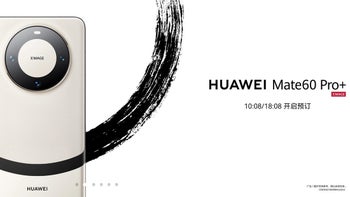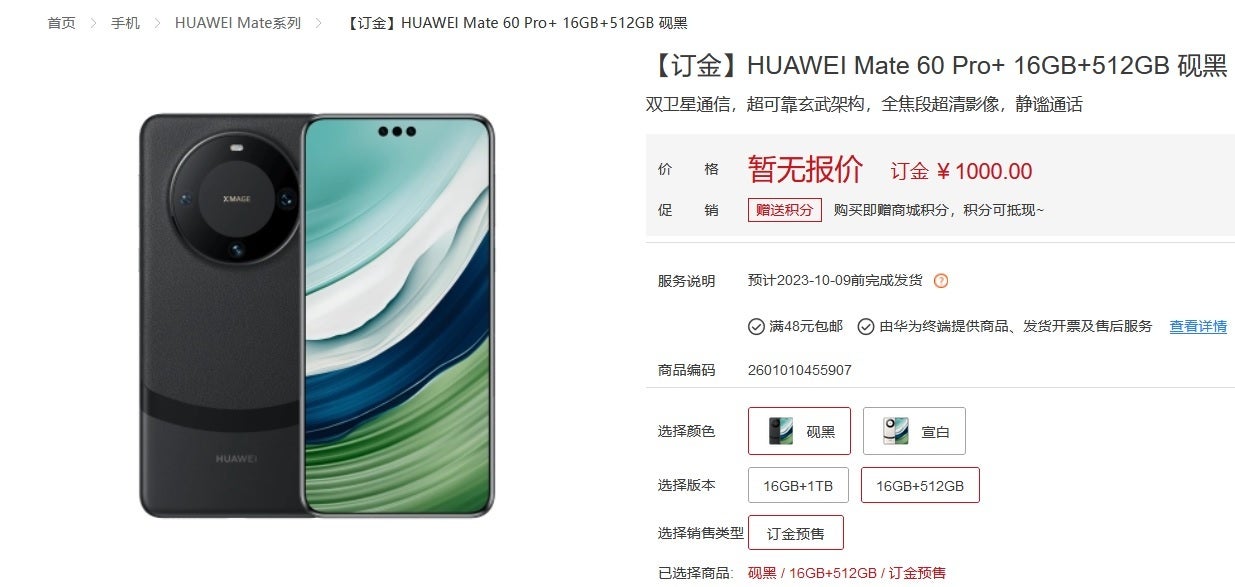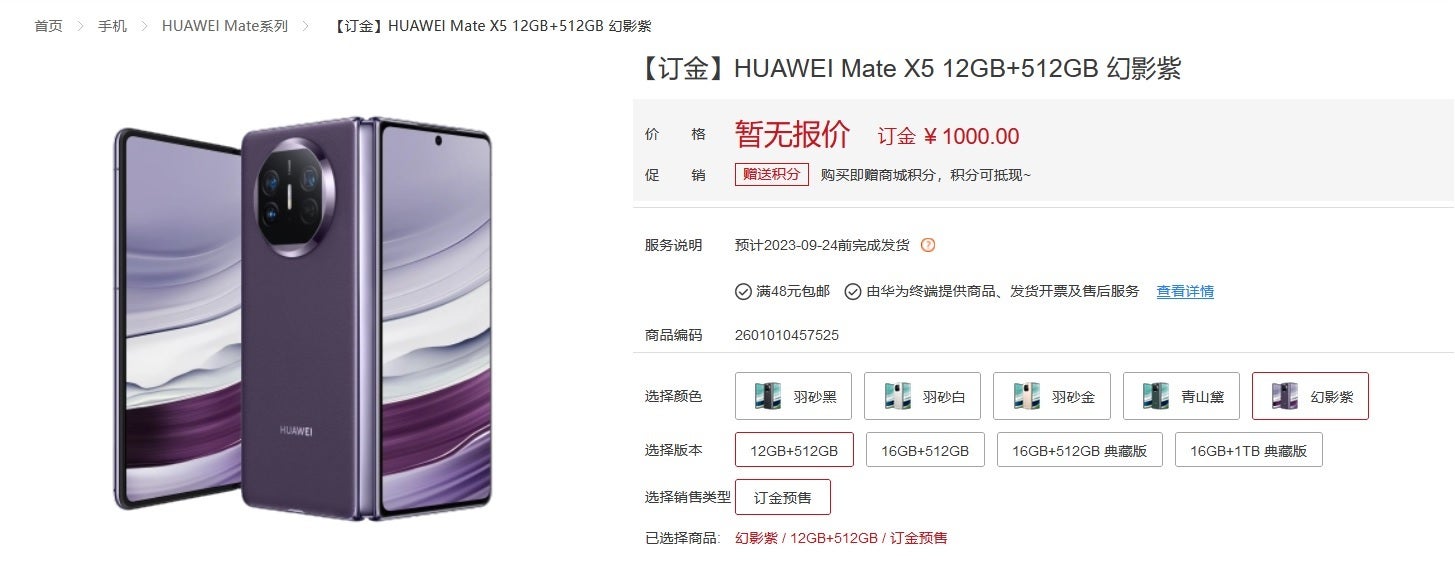Huawei announces the premium Mate 60 Pro+ 5G with up to 1TB of storage, and the Mate X5 foldable

A little more than a week after unveiling the Mate 60 Pro, its first 5G phone in three years, Huawei has extended the series by announcing the Mate 60 Pro+ according to listings in VMALL. Both phones are gathering attention for being equipped with a homegrown Kirin 5G chipset manufactured by SMIC, China's largest foundry, using its 7nm process node. The chip is under U.S. scrutiny because U.S. restrictions prevent Huawei from obtaining cutting-edge chips.
The Mate 60 Pro+ will be released on October 9th
Besides announcing the Mate 60 Pro+, Huawei also said that it is accepting pre-orders today for the device which will be released on October 9th. The Mate 60 Pro allows users who find themselves in an area without cellular connectivity to use satellites to make phone calls and send texts; the Mate 60 Pro+ will connect to two satellites at the same time. The Mate 60 Pro+ also offers users 16GB of RAM with 512GB or 1TB of storage.

Huawei unveils the Mate 60 Pro+ 5G phone
Huawei's two previous smartphone series, last year's Mate 50 line, and this year's P60 models, both were powered by Qualcomm's Snapdragon 8+ Gen 1 chipsets. Due to the U.S. restrictions, the chips were tweaked to prevent them from working with 5G networks. Third-party cases were available to allow users to experience 5G on the Mate 50 Pro and the P60 line, but this is not needed with the Mate 60 Pro and Mate 60 Pro+ thanks to Huawei's breakthrough chipset.
We should point out that even though the Kirin 9000s is a breakthrough chip for Huawei, it is still a few generations behind the chipsets being built by top foundries like TSMC and Samsung Foundry. While SMIC is using a 7nm process node to build the Kirin 9000s, TSMC is making Apple's A17 Bionic for the iPhone 15 Pro and iPhone 15 Pro Max using its 3nm process node. As a result, the A17 Bionic will have a higher transistor count making it more powerful and energy efficient than the new Kirin chipset.
Huawei also unveils a new Mate X5 book-style foldable phone
For example, the A13 Bionic SoC used to power the iPhone 11 line in 2019 was produced by TSMC using its enhanced 7nm node and it contained 8.5 billion transistors. The A16 Bionic SoC found inside the iPhone 14 series was made by TSMC using its 4nm node and contains nearly 16 billion transistors. That might give us a quick and dirty look at the differences between the Kirin 9000s and the chip currently running the iPhone 14 Pro series.

The Huawei Mate X5 book-style foldable phone
Reuters reports that Chinese social media posters are sharing speed tests on social media showing that the Mate 60 Pro is capable of delivering 5G download data speed that exceeds those of top-line 5G handsets. And with this occurring while the U.S. has been restricting Huawei's access to chips, it is a "slap in the face" to the U.S. according to Dan Hutcheson, an analyst with TechInsights.
Huawei also introduced a new book-style foldable Mate X5 model. The Mate X5 will be available with 12GB RAM/512GB of storage, 16GB of RAM with 512GB of storage, and 16GB RAM/ 1TB of storage. The phone comes with a 6.4-inch external display and a 7.85-inch internal screen. The camera array includes a 50MP primary camera, a 13MP ultra-wide camera, and a 12MP periscope telephoto camera. The front-facing camera weighs in at 8MP and a 5060mAh battery keeps the lights on.
The U.S. government says that it is interested in knowing how Huawei was able to find a way to work around the U.S. export rule that prohibits foundries using U.S. technology to build chips from sending any chips to the manufacturer. Other U.S. restrictions forced Huawei to develop its own HarmonyOS to replace the Google Mobile Services version of Android. The Mate 60 Pro, Mate 60 Pro+, and the Mate X5 are all pre-installed with HarmonyOS 4, the latest version of the operating system.










Things that are NOT allowed: